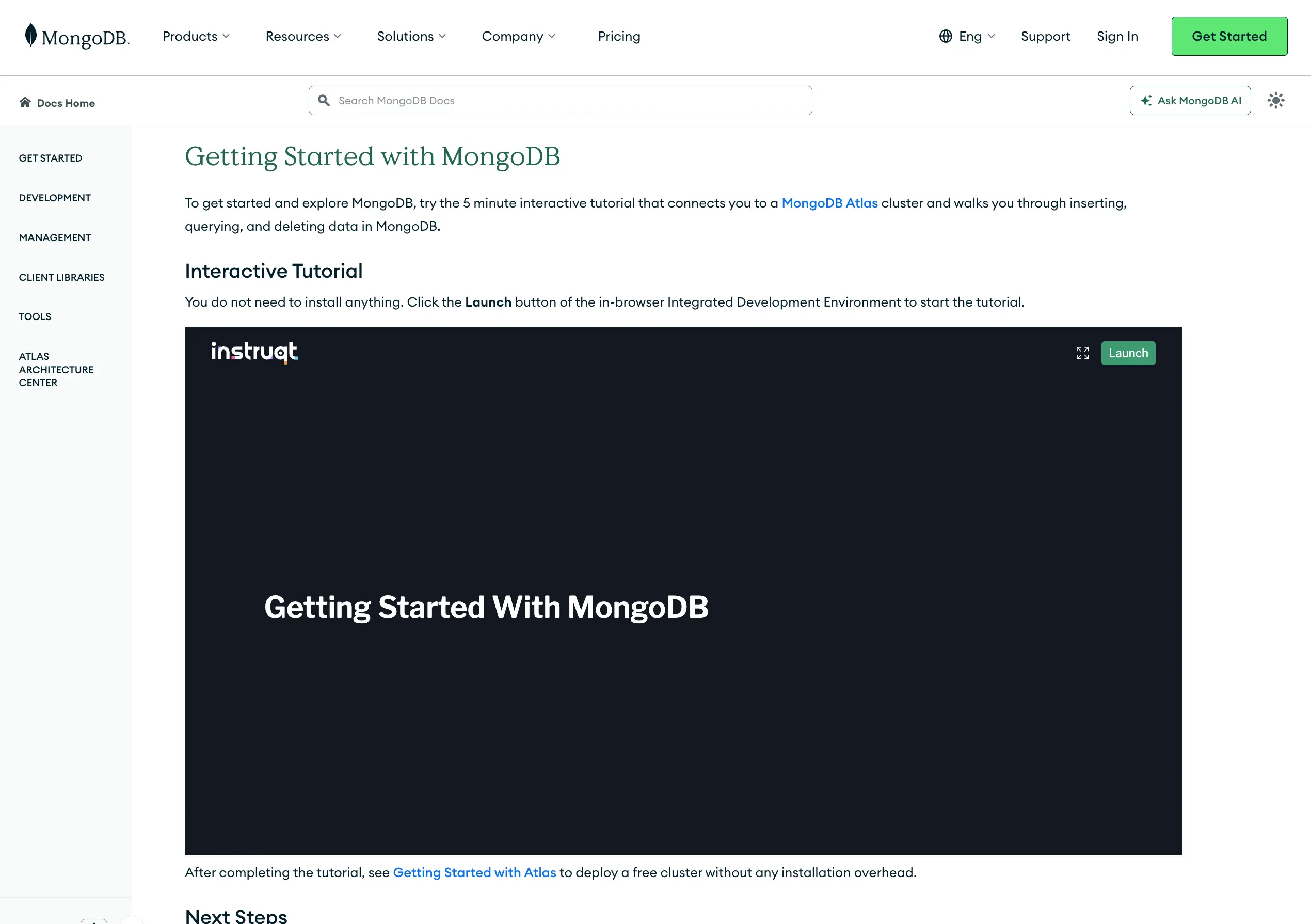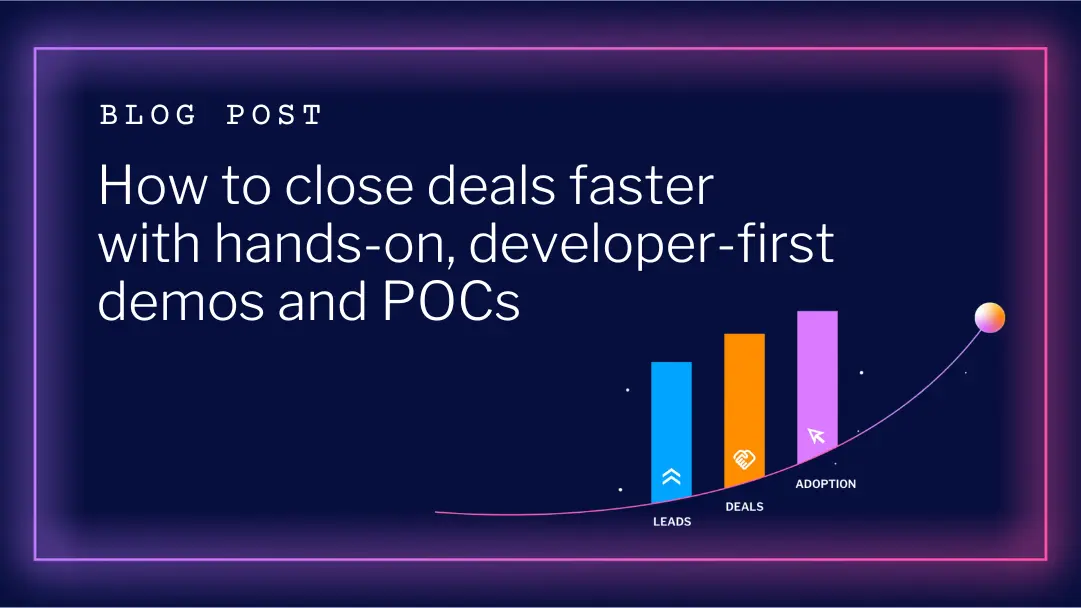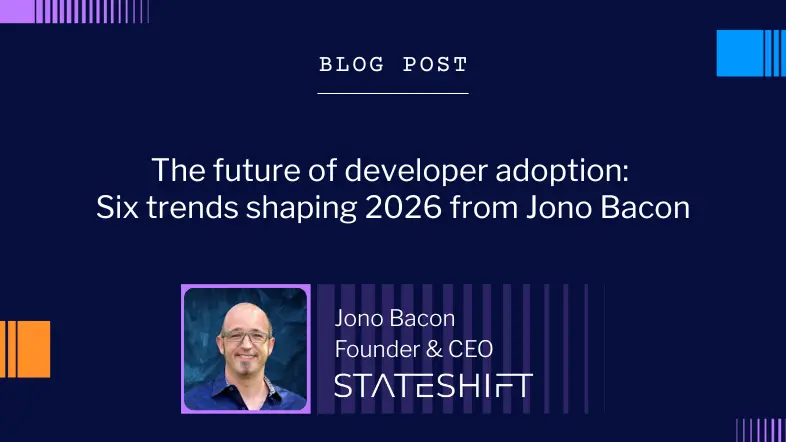Hands‑on, at scale: Elastic & MongoDB’s playbook for labs that drive growth

Instruqt is a flexible hands-on lab platform that powers instructor-led workshops, always-on training, and embedded product experiences. Teams use Instruqt to spin up realistic, browser-based environments, reduce setup time, and track outcomes with analytics.
At HANDS-ON by Instruqt, leaders from Elastic and MongoDB walked through how they scale hands-on learning across education, sales, and customer success without sacrificing technical depth. Below is a Q&A recap from the session, with practical guidance you can apply immediately.
Speakers
- Amanda Saavedra, Value Operations Director at Elastic
- Eoin Brazil, Senior Staff Engineer at MongoDB
- Moderator: Sean Lauer, VP of Marketing & Product at Instruqt
Question #1 - What does your organization own, and at what scale do you operate?
Elastic (Amanda Saavedra): Elastic’s solutions architecture (SA) organization, which serves pre-sales, includes roughly 330 SAs and also supports post-sales customer architects. The teams run recurring live workshops for customers, typically about one per month, targeting about 450 participants in each cycle. Amanda also noted that creator access spans a very large group, which allows Elastic to deliver relevant content across pre- and post-sales while expanding to education and marketing as adoption grows. The structure gives Elastic reach into different stages of the customer lifecycle while staying close to what field teams need during live conversations.
MongoDB (Eoin Brazil): MongoDB adopted Instruqt first inside the education team, then expanded across customer engineering, professional services, pre-sales, and developer relations (DevRel). Education includes the docs team, so hands-on labs are tightly aligned with formal learning paths. Eoin outlined the scale: approximately 60,000 customers, about 200,000 developers added monthly, and an education charter measured in the millions of learners across channels. The common platform, coupled with LMS integration, lets learners move smoothly between lesson content and labs, which is essential when programs run concurrently for on-demand learners and live workshop audiences.
Question #2 - What barriers prevented customers from getting hands-on, and how did labs change the experience?

MongoDB (Eoin): The initial barrier was setup and configuration time in home-grown environments. Eoin explained that learners could spend up to fifteen minutes on downloads and configs before they touched the actual task. After moving to Instruqt, learners started at a running prompt connected to a real cluster. This eliminated dead time, improved completion rates, and made sessions resilient for time-poor audiences. The change also removed a large class of support tickets that previously centered on local environment issues. The result was a smoother first mile that supported both on-demand courses and high-attendance events.
Elastic (Amanda): Amanda framed the challenge as “activation energy.” If the effort required before the first useful action is too high, fewer people engage. Elastic aimed to minimize toil, shorten the path to value, and ensure consistency across the room, especially when an instructor is supporting dozens or hundreds of participants at once. Standardized labs with predictable behavior gave presenters confidence and helped developers tinker with features immediately instead of wrestling with trials or setup.
“We do not want toil. We want them getting hands-on with the feature as soon as possible, and we need to do it consistently.” —Amanda Saavedra, Value Operations Director at Elastic.
Question #3 - Why did your organization choose Instruqt instead of building in-house or using other tools? What were the non-negotiables?
Elastic (Amanda): Reliability, consistency, and collaboration were critical. Being backed by solid cloud infrastructure reduced risk during customer-facing moments. Elastic wanted tracks that behave the same way for every learner, every time. The team also needed permissioning and copy-modify workflows so creators could iterate quickly without breaking production content. These criteria ensured no surprises during demos, workshops, or follow-ups.
MongoDB (Eoin): Eoin highlighted seamless learning management system (LMS) integration, developer-friendly content review via Git and GitHub, and strong live-event capabilities. MongoDB conducted a vendor bake-off across five or six alternatives and chose Instruqt because it supported both on-demand courses and large live rooms. He noted examples where hundreds of participants launched simultaneously without issues in adjacent rooms. The shared platform then made it easier for other business units to migrate, consolidate tooling, and reuse content that already worked.
“Suddenly, instead of spending up to 15 minutes configuring, downloading, doing all the pieces, the student would jump straight in, connected to a cluster, at the prompt doing exactly what we wanted to teach them.” —Eoin Brazil, Senior Staff Engineer at MongoDB
Question #4 - How did you get leadership buy-in to unify hands-on efforts across departments?
MongoDB (Eoin): Education acted as a platform team. They offered ready-to-run labs, base virtual machines (VMs), and container images, and migration help to early adopters in other groups. That support created visible wins and a community of internal advocates. As usage and results became clear, leaders had a straightforward case for consolidation. MongoDB also standardized on “skills” packages, each sixty to ninety minutes with defined learning objectives and a mandatory hands-on component. These packages run live or on-demand, and the shared learning outcomes keep content aligned across developer relations, professional services, customer success, and sales.
Elastic (Amanda): Elastic initially centered decisions around the revenue-generating side of the business. Amanda personally acted as the platform owner, jumped on issues within minutes through an internal Slack channel, and built trust with pre-sales teams. As adoption grew, Elastic stood up an infrastructure team and formalized governance without dampening creative output from 150 creators. The sequence was important: establish credibility with front-line teams, then add structure to support scale.

Question #5 - How do you organize ownership, creators, and governance?
Elastic (Amanda): Elastic encourages creativity and then applies lightweight control. A React-based internal portal, built on Instruqt’s open API, surfaces only production-ready content to field teams. Behind the scenes, there are staging and archive states, Salesforce tagging for analytics, a schedule of workshops, and hot-start controls to manage infrastructure usage. This combination preserves a single front door for trusted content while letting hundreds of bespoke workshops exist and evolve in the background.
MongoDB (Eoin): MongoDB uses tiered environments, Git-based reviews, and cross-team planning to prevent duplication. Track developers exist in each business unit, and regular share-outs spread effective patterns, such as using JupyterLab or specific validation techniques. The LMS catalogs content and assets so teams can reuse instead of rebuilding, which keeps a broad portfolio aligned without heavy centralization.
Question #6 - How do you keep a single source of truth without slowing teams down?
Both teams combine promotion gates with visible catalogs. Elastic’s portal publishes only “gold standard” labs and tracks metadata needed for analytics and operations. MongoDB manages promotion from development to production through reviews and designated directly responsible individuals (DRIs), while quarterly planning and content councils keep teams aware of what others are building. The philosophy is to manage sprawl rather than attempt to eliminate it, because diverse use cases require flexible, reusable building blocks.
Question #7 - What would you do differently, and what would you double down on earlier?
Elastic (Amanda): Move earlier to a smaller set of centralized sandboxes that scale at the pace of the product. Publish content guides that show what “good” looks like for a large creator base, and continue to grow infrastructure support as adoption spreads from revenue teams to education and marketing.
MongoDB (Eoin): Extend skills programs beyond developer content into operations and platform scenarios, including break-fix exercises that mirror real-world scenarios. Tie hands-on achievements to credentials and badges so progress is visible to learners and leaders.

Question #8 - How do you measure success and think about ROI?
Both organizations look at engagement and completion in labs, time to first successful action, progression across a path, and downstream behaviors such as trial starts, certification, and enablement milestones. Instrumentation through the LMS, combined with lab analytics, helps teams validate which topics stick and where learners stall.
For live workshops, high-concurrency stability and repeatable experiences matter because they translate directly to instructor confidence and participant satisfaction.
Question #9 - What’s next for your program over the next one to three years?
Elastic (Amanda): Centralized, reusable sandbox images that support rapid content creation, plus content standards that keep a large creator community aligned. The aim is faster iteration with consistent quality, matched to product change.
MongoDB (Eoin): Broader role coverage, richer scenario-based labs, and deeper ties between skills, assessment, and recognized credentials. Eoin also pointed to new content directions inspired by the wider ecosystem and acquisitions, which will require hands-on validation at scale.
Question #10 - How will hands-on platforms evolve?
MongoDB (Eoin): He expects more personalization driven by LMS signals and assessments. As learners consume content, systems should recommend the next best lab and track progress automatically.
Elastic (Amanda): She views hands-on as a thread that weaves through the entire customer journey, from first touch to onboarding and ongoing education. She expects AI to guide content targeting and to accelerate lab authoring by transforming existing documentation and assets into structured exercises.
Best practices for hands-on at scale, tactics that actually work
- Design for zero setup. Use browser-based environments, single sign on (SSO), and pre-warmed resources so learners begin with a real task in seconds, not minutes. Track the time to first successful action and treat it as a product metric.
- Act as a platform team. Provide shared base images, example tracks, and migration help so new groups can adopt quickly. Build an internal community of advocates who reuse rather than rebuild.
- Publish a golden catalog. Keep experimentation in the background, then promote only production-ready labs to a front-door portal. Add analytics, workshop calendars, and hot-start controls to manage usage and prove impact.
- Standardize skills. Package sixty to ninety minute units with clear learning objectives, aligned assessments, and a mandatory hands-on component. Make each unit usable live or on-demand.
- Integrate with your LMS. Pass identity and progress automatically between lessons and labs, and update completions without manual steps.
- Tier environments and use reviews. Promote from development to production with Git-based checks and designated reviewers. Share patterns across teams in regular planning sessions to reduce duplication.
- Centralize sandboxes. Maintain a smaller set of scalable base images and publish content guidelines that define quality. This reduces maintenance while keeping authors productive.
- Instrument everything. Measure starts and completions, time to value (TTV), satisfaction, and downstream actions such as trials, certifications, or enablement milestones.
- Design like product. Favor short scenarios, real-time validation, and visible progress states. Make success easy to achieve and failure easy to recover from.
- Use AI where it helps now. Personalize next steps using LMS signals and accelerate authoring by transforming documentation and prior labs into new exercises.
See Instruqt in action
Book a personalized demo to see how hands-on learning can help your team scale developer engagement, shorten time to value, and drive product-led growth from the first click.





.png)

